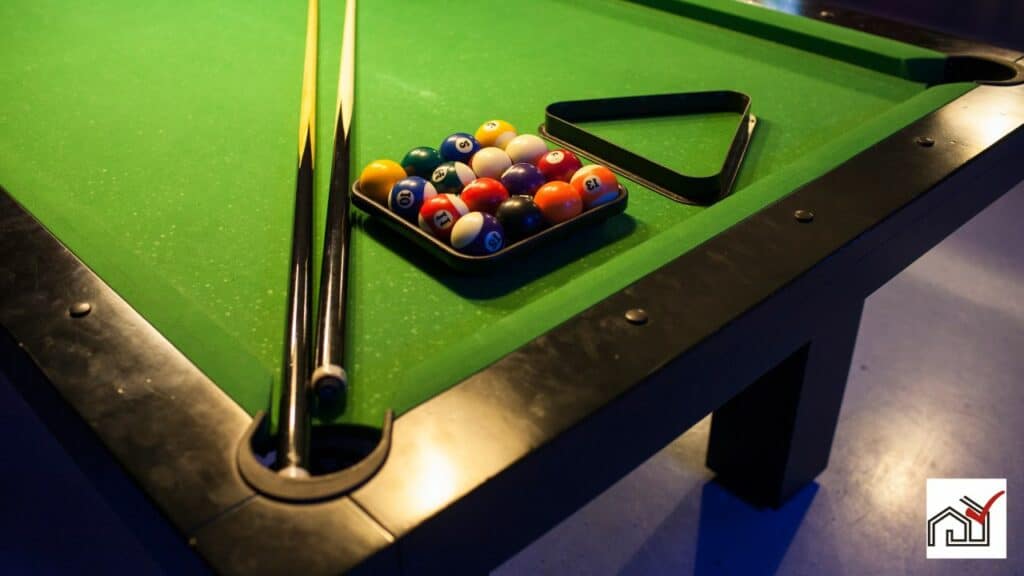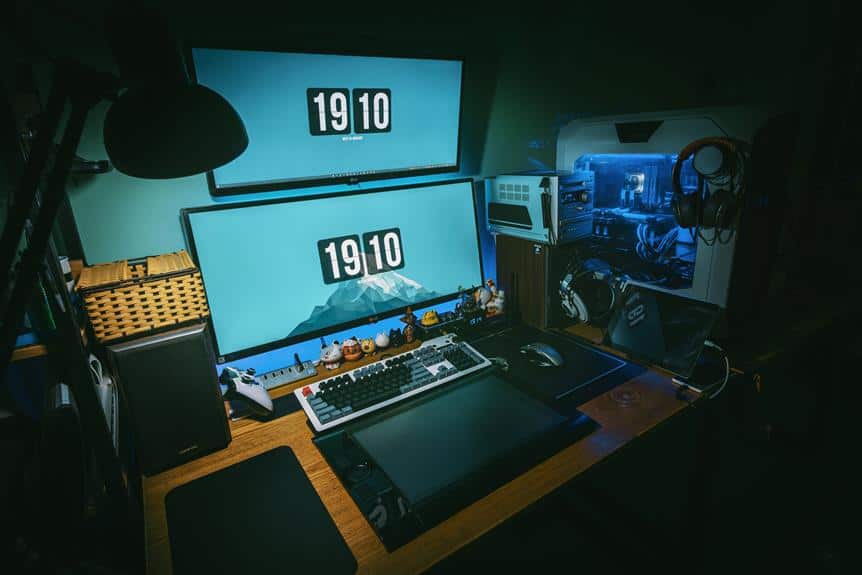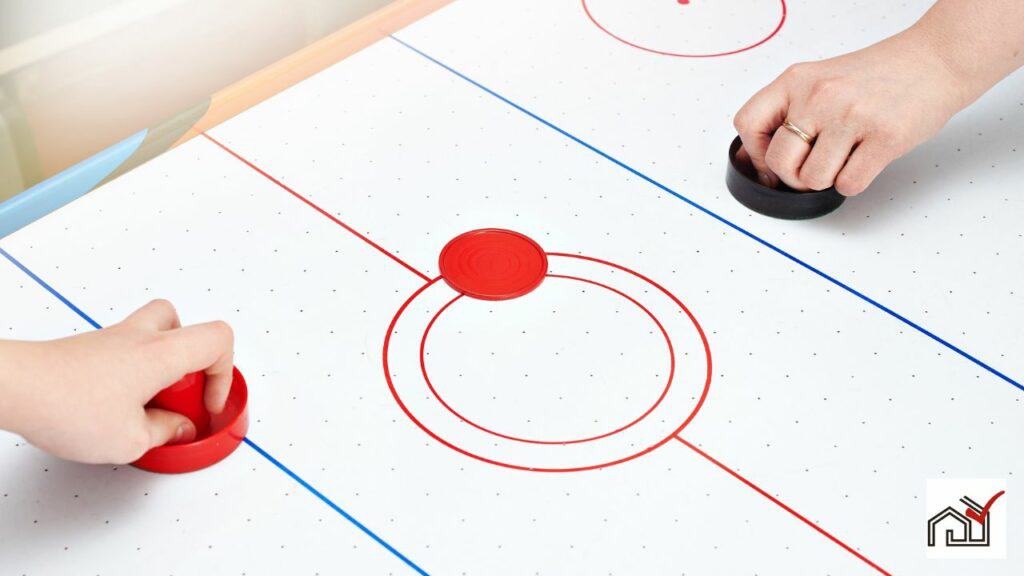The best flooring for a pool table is one that is stable, durable, and visually pleasing. Hard surfaces like laminate or hardwood are solid and help keep the table level, but may need protectors to prevent damage.
Carpet is quieter and softer, but it can be difficult to keep the table level. Consider moisture resistance, ease of cleaning, and how the flooring looks with your home's style.
Your choice should also fit your budget and personal taste. This guide will help you decide on the most suitable flooring for a pool table.
Assessing Stability and Support
When choosing flooring for a pool table, it's important to select a material that provides strong stability and support. This is because pool tables are heavy, and the floor needs to support the weight without bending or changing shape. The flooring should be level so that the balls can roll smoothly for fair play.
Hard floors like hardwood, concrete, or laminate are usually the best choice because they are firm and don't get indented easily. Soft floors like thick carpet can cause the table to be unsteady, which might affect the game. If a pool table is on carpet, it should be leveled carefully and checked often as the carpet may compress over time.
It's also important to consider that the pool table could scratch or damage the floor during use. To prevent this, use thin protective pads or a rug under the table legs, but make sure they don't make the table unsteady.
Considering Moisture Resistance
When selecting flooring for a pool table, it's essential to choose a material that is moisture-resistant to prevent water damage and maintain the table's condition. Basements, a common location for pool tables, are prone to moisture, making it important to pick flooring that can withstand this environment. Solid wood may not be ideal in moist areas due to its tendency to warp and swell.
Tile flooring is a better choice for moisture-prone areas as it offers excellent moisture resistance and provides a stable, level surface for the pool table. Tiles do not absorb water, protecting against spills and moisture. In contrast, laminate flooring is less expensive than solid wood, but it needs to be carefully chosen; only some laminate options are designed to resist water.
Carpet tiles are another good moisture-resistant option, with the added advantages of sound absorption and comfort. These tiles are constructed to resist water and are commonly used in commercial spaces for their longevity and easy replacement.
For floor and pool table protection, it is critical to choose flooring that ensures moisture resistance and stability. The correct flooring will prevent issues such as table warping, excessive ball bounce, and poor shock absorption, contributing to the long-term use and enjoyment of the pool table.
Analyzing Budget and Maintenance
The type of flooring under a pool table affects both its performance and the owner's budget and maintenance efforts. Wood flooring typically costs more initially but offers durability and is easy to clean, making it a practical choice. In contrast, carpet choices vary in price and upkeep.
A short pile carpet is preferable for pool tables because it provides stability, is easier to maintain, and resists wear that could impact the table's balance. Moving the table on short pile carpet is also less difficult.
Long pile carpets require more maintenance as they trap dust and debris, and they make it challenging to keep the pool table level.
Choosing the right flooring involves considering the cost, cleaning ease, and the practicality of moving and maintaining the pool table. This decision impacts the enjoyment and lifespan of the pool table.
Evaluating Aesthetics and Comfort
The choice of flooring around a pool table affects both the room's appearance and player comfort. It's important to select flooring that complements the pool table and fits the room's design. Flooring choices influence the game-playing experience and contribute to the room's ambiance, especially in spaces that serve multiple functions, such as those with a pool dining table.
Carpeting offers a soft surface that is comfortable for players, especially shorter pile carpets that don't hinder movement. Carpet texture and color should be chosen to match the pool table, ensuring a unified aesthetic. However, carpets need regular cleaning to maintain their appearance.
Laminate flooring provides a wide range of colors, allowing for coordination with the pool table's cloth. It offers a stable surface for players and can mimic the look of more costly materials, adding an elegant feel to the room at a lower cost.
Tile flooring is hard-wearing and simple to clean but may not be as comfortable as softer options. Nonetheless, with careful selection, tiles can enhance the room's look.
Wooden floorboards add warmth and create a welcoming space, but require the use of protectors to prevent damage.
Vinyl or linoleum is durable, easy to integrate into the decor, and maintains focus on the pool table as the centerpiece. This type of flooring balances aesthetics, comfort, and functionality, making it suitable for a games room with frequent use.
Exploring Flooring Options
When choosing flooring for a pool table, it is important to consider several options.
Carpet and area rugs can provide cushioning and floor protection but may need re-leveling over time as they settle.
Laminate flooring is firm and easy to maintain, plus it resists damage from dropped balls and comes in various colors.
Tiled floors are durable and easy to clean but could be damaged by falling balls; using a protective rug can reduce this risk.
Wooden floorboards add a warm look but may require floor protectors to prevent damage from table legs.
Vinyl and linoleum are durable, scratch-resistant, and easy to clean, offering a variety of design options.
When selecting flooring for a pool table, consider durability, maintenance, and aesthetics to enhance the playing experience.
Making the Final Decision
The ideal pool table flooring balances function, durability, and design. It should support the table's weight and frequent use while matching the room's decor.
Hardwood, laminate, or engineered wood are good choices for pool table flooring. These materials are stable, moisture-resistant, and easy to clean, making them suitable for areas with high foot traffic.
Luxury vinyl or ceramic tiles are also viable options due to their durability and water resistance. Ensure these surfaces are level to avoid affecting gameplay.
Consider your budget, including installation and long-term maintenance costs. Some floors may cost more initially but could be more economical over time due to lower maintenance.
Choose flooring that contributes to the room's welcoming and comfortable atmosphere. Consult with experts to match your selection to your pool table and room's needs.





